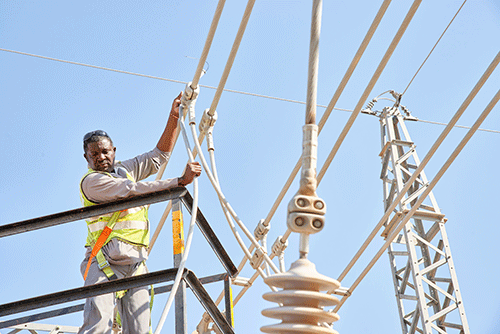Namibian consumers have to tighten their belts even further this winter, as electricity prices are going to increase from 1 July 2022.
The Electricity Control Board yesterday announced an increase in bulk electricity tariffs by 7.30% from N$1.6982 to N$1.8222 per kilowatt-hour (kWh) for the 2022/23 period.
This means regional electricity distributors (Reds), local authorities and large power users like mines that buy electricity directly from NamPower will have to pay more for electricity, which indirectly affects local consumers.
The approved increase follows a tariff decrease in 2019/20, the fact that no tariff increases were affected for 2020/21 and an increase of 2.29% in 2021/22.
Consumers have endured sharp increases in fuel and food prices in the past months. Announcing the increase, Electricity Control Board (ECB) acting CEO Rachel Boois said the ECB board deliberately reviewed NamPower’s application for an effective bulk tariff increase of 12.78%, which would have resulted in an increase from an average N$1.6982 to N$1.9153 per kilowatt-hour (kWh) for the mentioned period.
“As a review process, ECB considered several factors, including the impact of the tariffs on the electricity supply industry, consumers and the economy at large. We are cognisant that prices of goods and services have been increasing, and this is negatively affecting consumers,” said Boois.
As part of discussions with the energy ministry, she stated the ministry made available N$100 million through the National Energy Fund (NEF) to mitigate the impact of the increase on consumers.
The allocated funds will be used for energy-related variable costs of NamPower in consultations with the ECB.
This tariff increase applies to NamPower bulk customers.
Distribution utilities such as Reds, local authorities and regional councils will individually apply to the ECB for a review of their distribution tariffs, which, when approved, will be applicable to end consumers.
Touching on the customer-funded power plant, acting CEO noted over the years, the tariff included an amount for long-run marginal cost (LRMC) purposes.
She explained: “LRMC is intended to ensure a smooth tariff path for the future, especially when NamPower is experiencing cash flow challenges due to expensive power supply options or building new power plants”.
The LRMC funds, she said, may be used to cushion customers from unexpected tariff hikes, when the economy is depressed and/or to build new power plants that will ensure an affordable projected tariff path.
For the past two years, a total amount of N$85 million was made available to mitigate the impact of the tariff increase on consumers and the economy.
“Due to the current depressed economic situation, no provision was made for the recovery of the LRMC as part of the tariff for the 2022/23 period. The ECB will, in future, consider reinstating the recovery of the LRMC,” stated Boois.
Furthermore, she said, future tariffs are expected to increase in line with inflation and to cater for the new generation.
However, Namibia should realise that external factors such as weather, foreign exchange fluctuations and other unforeseen circumstances may affect the projected price path and must be taken into consideration when reviewing future tariff applications.
At the same occasion, general manager of economic regulation at ECB Pinehas Mutota said Namibia got into new electricity import agreements with Eskom and Zambia Electricity Supply Corporation Limited (ZESCO), which will run for three years.
Namibia has been importing about 200 megawatts from Eskom, which is now reduced to 100 megawatts, thus reducing reliance on Eskom as an electricity supplier.
In the new contracts, he said: “We have now secured an additional import contract from Zambia, which is about 80 megawatts to cover the 100 megawatts. But government is much awake on trying to make Namibia self-sustaining with electricity”.
Rojas Manyame, general manager of technical regulation at ECB, said, at the end of the day, ECB wants Namibia to be competitive to attract investment into Namibia and not to scare them away with higher tariffs.
Local energy economist David Jarrett said government should start thinking of new ways to reduce tariffs in the future.
He said such increases are substantial to consumers, as they are already facing many price hikes recently. He added the effect of the increase on the average consumer would expand through residential retail rates that will have to go up with anything that utilises electricity. He urged consumers to consider energy efficiency in their homes, saying it should be treated as a scarce resource.


